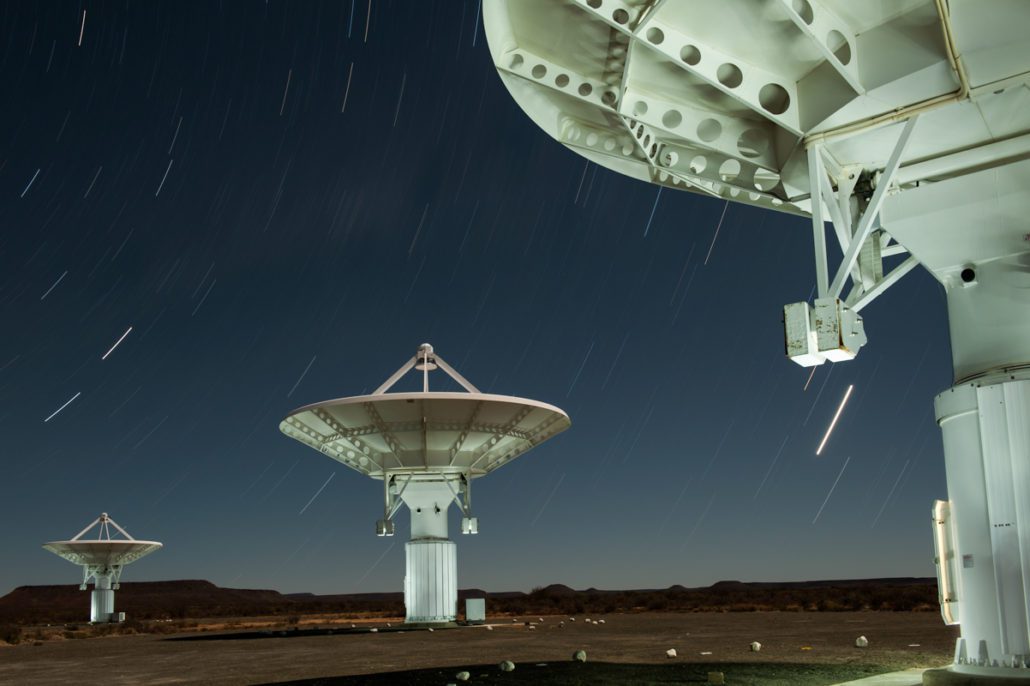Skift Take
There’s a dark irony in the fact that, when planning the world’s largest radio telescope, nobody thought to look up. Now, astronomers and airlines in South Africa are battling to find a way to keep the skies quiet and air traffic flowing smoothly.
The construction of the Square Kilometre Array (SKA) in South Africa has become a feather in the cap of the country’s scientific community. When completed in the mid-2020s the SKA will become the world’s largest radio telescope, with 197 dishes searching for faint radio signals from distant stars and galaxies.
South Africa’s sparsely populated Northern Cape province, near the town of Carnarvon, seems like the perfect location for this international scientific endeavor: sprawling sheep farms separate towns that are small and far-flung, keeping radio interference to a minimum.
Except, ironically, nobody thought to look up. Above Carnarvon at 35,000 feet is the busiest patch of airspace in Africa.
Flights between Cape Town and Johannesburg — the world’s 11th-busiest domestic route — travel overhead more than 50 times a day, along with private aircraft, cargo jets, and international traffic from the Middle East and East Africa. All of which adds up to a cacophony of radio interference that threatens to drown out the signals astronomers are listening for, and potentially damage the sensitive radio telescopes.
To clinch South Africa’s bid to host the SKA, the government passed the Astronomy Geographic Advantage Act of 2007, protecting the “Karoo Central Astronomy Advantage Areas,” where the SKA is located. According to the act, as of December 15, 2019, the use of a broad swath of the radio frequency spectrum – 100 megahertz to 25.5 gigahertz – is prohibited.
“Unfortunately that includes all of the frequencies which are allocated internationally for the use of aviation,” said Linden Birns, independent aviation consultant at Plane Talking.
It’s worth noting that the act specifically excludes aviation for now, but leaves the door open for the ministers of Transport and Science and Technology to agree on “measures necessary for the protection of the Karoo Core and Central Astronomy Advantage Areas.”
It’s the scale and scope of those “measures” that has the aviation industry concerned. The SKA and commercial aviation cannot co-exist in the current arrangement and a solution — technical or operational — is needed.
To find that solution a technical working group has been formed, with representatives from the SKA, Department of Transport, Department of Science and Technology, Civil Aviation Authority, the aviation industry and Air Traffic Navigation Services (ATNS), the agency responsible for the country’s airspace management.
However, it’s making glacial progress. Discussions date back to 2017, and the group has yet to make any real progress just months — in theory — before the skies go quiet.
“The technical working group will look into these issues, and ensure the SKA and aviation can co-exist,” said Jeoffrey Matshoba, the executive for air traffic management planning and standards at ATNS. “We anticipate that by mid-September it will be up and running.”
In the past, representatives of the SKA have come under fire for suggesting that airlines will need to be re-routed around the area, a proposal quickly shot down by airlines and air traffic specialists.
“Rerouting traffic will call for an overhaul of the whole of South Africa’s airspace, and that has huge implications. We don’t want to push traffic to start flying longer routes, it’s not sustainable,” said Matshoba. “Rerouting is not an option.”
“The aviation industry seeks a clear, unambiguous statement from the Department of Transport that its very financially critical, and vital national important role, will not be compromised in any way,” said Arthur Bradshaw, former head of South Africa’s air traffic control, and a global expert on airspace management.
Today the talk is about mitigating the impact of aircraft radio transmissions, although it’s not clear what form that might take.
In a statement the South African Radio Astronomy Observatory (SARAO), which manages the SKA project, said it “is actively engaging with the Civil Aviation Authority and the Air Traffic Navigation Services to derive the best solution for all … any mitigation action will not negatively impact commercial airline passengers, or the commercial airline companies.”
Representatives from the SARAO did not respond to repeated requests from Skift for further interviews, but in 2018, Adrian Tiplady, head of strategy and business processes at the SARAO, told Engineering News Online: “The solutions will be a hybrid mix of technical solutions, regulatory solutions, and operational solutions.”
That’s diplomatic, but hardly specific, and it is details that the local industry is looking for.
“At the moment, the problem is a lack of clarity,” said Birns. “Part of the confusion is down to the sheer number of agencies involved, and although we can point fingers everywhere, what’s more important is to find a solution.”
Until that solution is found, “they cannot prevent aviation from operating on normal frequencies,” said Chris Zweigenthal, chief executive officer of the Airlines Association of Southern Africa. “From an airline perspective, until such time as someone tells us otherwise, it’s business as usual.”
Richard Holmes is a Skift contributor based in South Africa.
The Daily Newsletter
Our daily coverage of the global travel industry. Written by editors and analysts from across Skift’s brands.
Have a confidential tip for Skift? Get in touch
Tags: south africa
Photo credit: Currently the most sensitive radio telescope in its class in the world, the "MeerKAT" installation in the Northern Cape province of South Africa (pictured) comprises 64 dishes and is a precursor to the Square Kilometre Array (SKA). When the SKA dishes are complete, MeerKAT will be incorporated into the wider SKA system. SARAO
